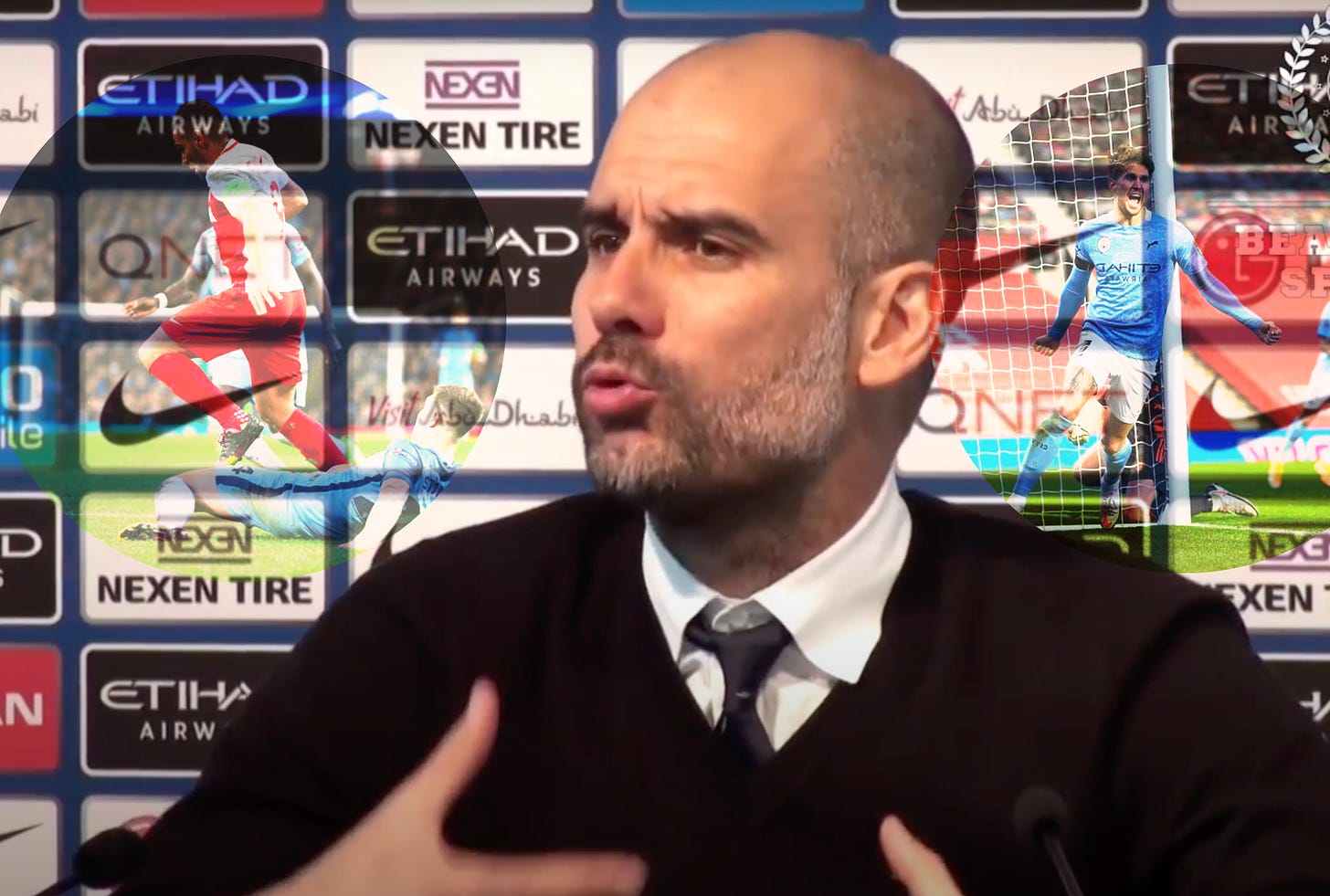When John Stones signed for Manchester City in 2016, it signaled so much more than a player acquisition. While Guardiola had long been known to prefer defenders who had exceptional ability in possession, Stones was seen as something of an extreme version of that platonic ideal. The lanky Yorkshireman had certainly impressed with his ball progression and penchant to carry possession from deep, but he hadn’t done much to quell criticisms of his suspect physicality. Nonetheless, at just twenty-two, Stones became a material indicator for Guardiola’s lofty aspirations at City- ones that existed in direct contrast with the perception of how one should or could be successful in a rough and tumble English football league.
Fast forward a few years, and what many expected of Stones’ time at an ‘elite’ club hasn’t really panned out. While the young brit played a central role in the evolution of the team during his first two seasons, his influence started to wane as Guardiola sought greater defensive solidity. Though Guardiola had done much to combat the idea that he had to fundamentally alter his style of play to attain success in his new footballing environment, it seemed the laxness with which Stones often played, in addition to his frailties in physical battles, would prove too great a risk for a team that already towed a fragile balance between success and failure.
With defensive midfielders and aged legends taking up spots over the young defender, it seemed his time at City had come to an end. Until it didn’t.
Since the restart, Stones has been an increasingly consistent member of the team and not just because of City’s issues with COVID-19. Standout performances against all kinds of opponents have demonstrated that Stones has regained a degree of confidence and established himself as a viable option amongst those who were brought in to replace him. However, what’s important to remember within the arc of Stones’ redemption is what is asked of a modern defender.
To fully understand Stones’ hero’s journey, one must first examine the context of his character. Why defenders are traditionally expected to be physically adept isn’t solely down to antiquated ideas of masculinity or conventional wisdom- it was informed by a material need. Due to the absence of formal shapes and defensive organization, individual actions often dictated whether a team conceded or not. What stood between the goal was the pace, strength, or combination of physical attributes focused on repelling an attacker. With space being a ubiquitous commodity in the early days of professional football, it was logical to prefer a physical specimen because they gave the best chance of solidity.
Today’s football is vastly different. With the advent of the passback rule and the adoption of shapes and formations across the entirety of the sport, space is a lot harder to find. How teams go about creating it, or, in the case of defenders, limiting it, is where a player’s career lives and dies.
The difficulty about playing in a system like Guardiola’s is that the team's defensive efficacy balances on the limits of a physical paradox. To maintain the offensive output his sides are synonymous with, Guardiola aggressively positions much of the team high up the pitch to have the best chance at manipulating and moving the opposition’s defensive shape. What this requires is an active engagement with the rules that make modern football so enthralling. Though there is a proverbial eternity of space behind the last line when City are in possession, it’s an illusion predicated on the awareness and organization of the entire side. If the team works in tandem with one another when the ball is lost, that space is kept inaccessible by an ever creeping offside trap or the physicality of a retreating line. The problem arises when that trap is sprung.
Furthermore, aside from walking this tightrope of millimeters, defenders are often asked to be the creators of space. With the foremost attacking talents often occupied by the realities of modern defensive organization, creativity and patience -somehow in tandem- are what is required of defenders in a possession system as the positions who tend to see the majority of the ball. Like the well-known transformation of the fullback, ironically most famously with Guardiola at Barcelona, the footballing world’s spotlight has moved slightly inward. Central defenders are now expected to not only defend in an indirect, nuanced manner by coordinating a counterpress with attacking players, but also maintain a cohesive spacial trap and operate as the lynchpin of the team’s actions in possession (on top of traditional, physical defending).
So, with all that said, an appreciation for John Stones’ return to form should be especially significant. The near impossibility of occupying the position of the modern defender is reason enough to celebrate anyone brave enough to do it, but for someone who has seen so much variance in returns to still maintain confidence in their ability to play is something anyone can get behind. As Guardiola famously proclaimed amidst the difficulty of Stones’ early seasons, ‘John Stones has big balls.’ The compliment may harken back to an era of misguided masculinity, but it pays respect to a player that, as he later denotes, has ‘character.’ Despite his mistakes, John Stones is a guy worth having around.



